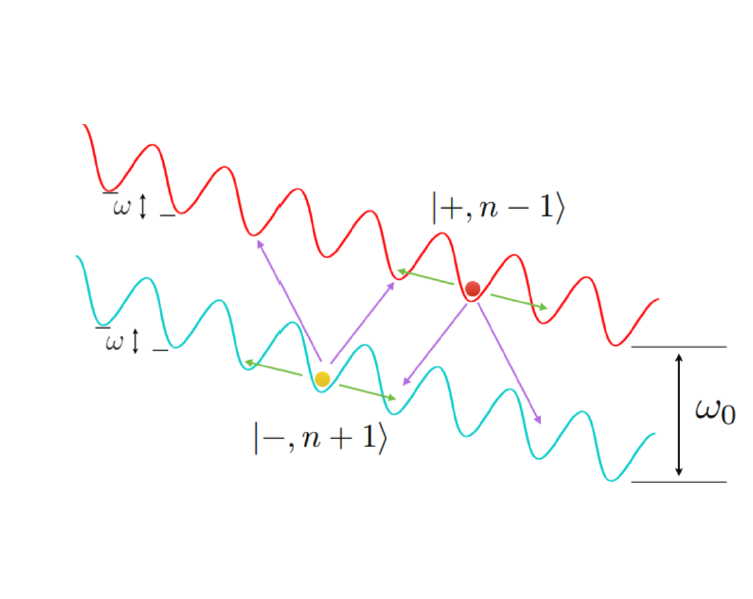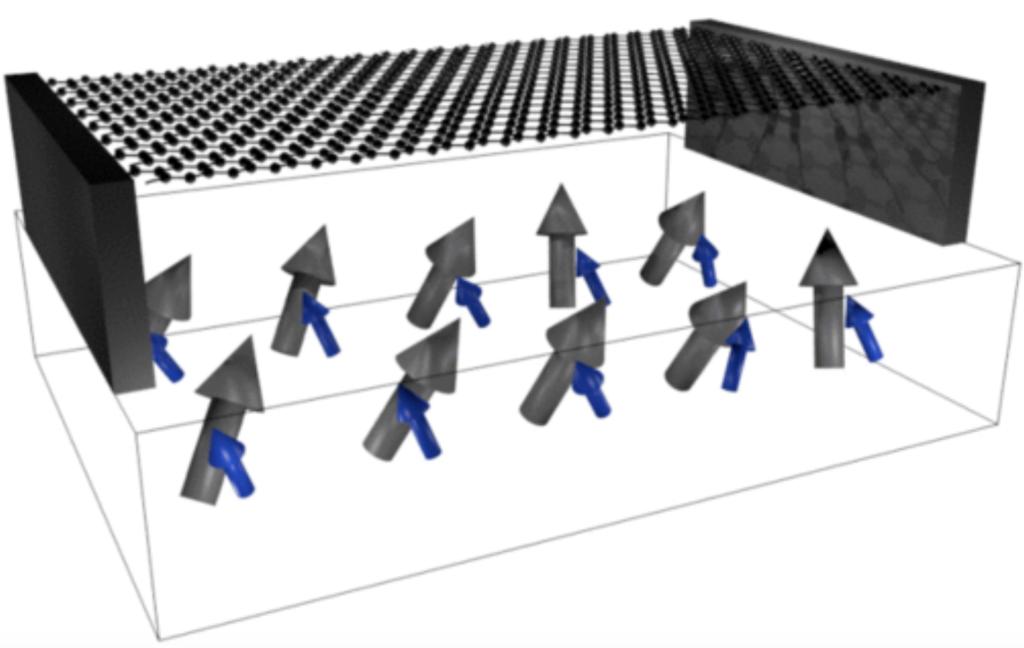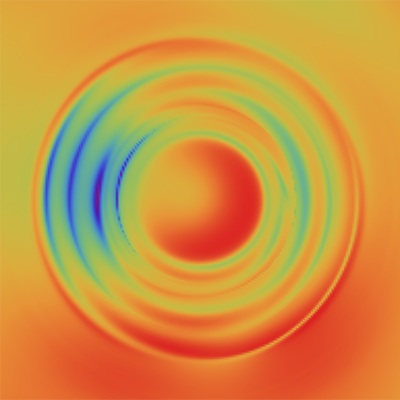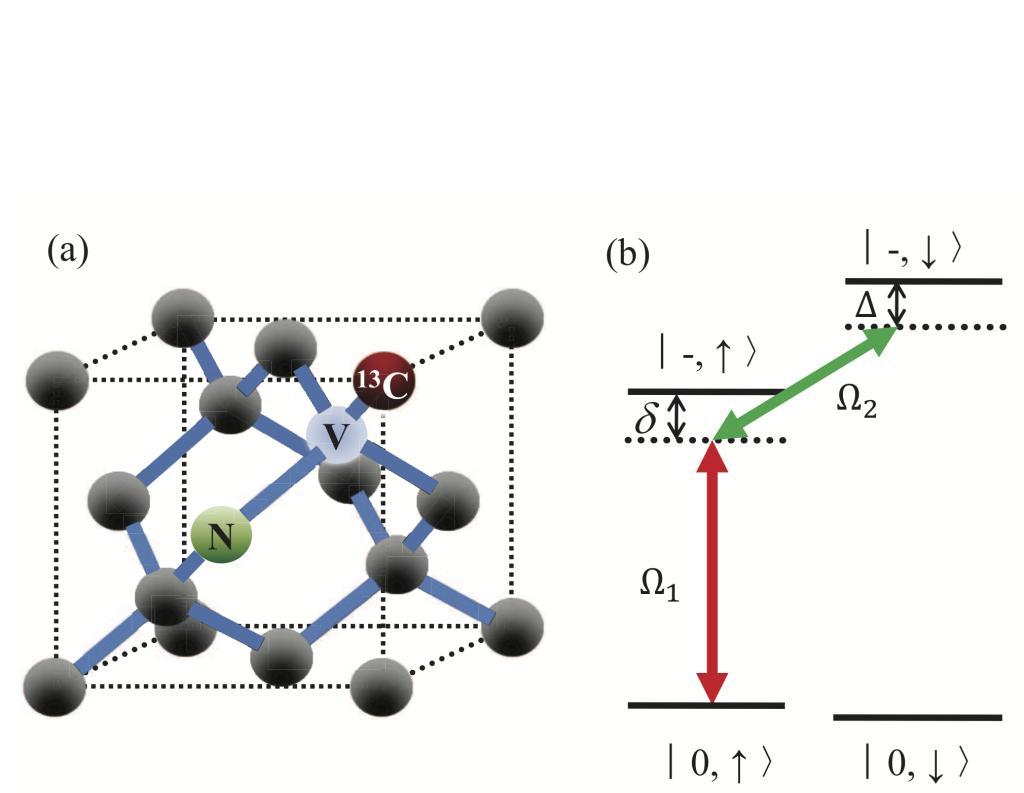
Z.-J. Shu, Yu Liu, Qingyun Cao, Pengcheng Yang, Shaoliang Zhang, Martin B. Plenio, Fedor Jelezko, and Jianming Cai
We experimentally observe Floquet Raman transitions in the weakly driven solid-state spin system of a nitrogen-vacancy center in diamond. The periodically driven spin system simulates a two-band Wannier-Stark ladder model and allows us to observe coherent spin state transfer arising from a Raman transition mediated by Floquet synthetic levels. It also leads to the prediction of an analog photon-assisted Floquet Raman transition and dynamical localization in a driven two-level quantum system. The demonstrated rich Floquet dynamics offers new capabilities to achieve effective Floquet coherent control of a quantum system with potential applications in various types of quantum technologies based on driven quantum dynamics. In particular, the Floquet Raman system may be used as a quantum simulator for the physics of periodically driven systems.

Puhao Cao, Ralf Betzholz, and Jianming Cai
We propose a solid-state hybrid platform based on an array of implanted nitrogen-vacancy (NV) centers in diamond magnetically coupled to a mechanical oscillator. The mechanical oscillator and the NV electronic spins both act as a quantum bus and allow us to induce an effective long-range interaction between distant nuclear spins, relaxing the requirements on their spatial distance. The coherent nuclear spin-spin interaction, having the form of an Ising model, can be maintained in the presence of mechanical damping and spin dephasing via a pulsed dynamical decoupling of the nuclear spins in addition to the microwave driving field of the electronic spins. The present hybrid platform provides a scalable way to prepare multipartite entanglement among nuclear spins with long coherence times and can be applied to generate graph states that may be used for universal quantum computing.

Tianyi Du, Jianming Cai, and Haibin Liu
Quantum sensors based on nitrogen-vacancy (NV) centers in diamond have attracted intensive interest due to their superior measurement sensitivity even at the single-spin level. Such a sensitive quantum spin sensor incorporating a scanning apparatus may offer a way to image spins on surfaces and micromagnetic structures. Apart from high sensitivity, superspatial resolution represents another appealing feature, although it is challenging to achieve for a NV-based scanning microscope. Here, we propose a hybrid scanning microscope scheme under ambient conditions by using single-nitrogen-vacancy-center spin in diamond to achieve high spatial resolution. With a detailed numerical analysis, we demonstrate that it is feasible to detect and distinguish individual spins with a nanometer spatial resolution.

Yang-Yang Wang, Jing Qiu, Ying-Qi Chu, Mei Zhang, Jianming Cai, Qing Ai, Fu-Guo Deng
The implementation of quantum entangling gates between qubits is essential to achieve scalable quantum computation. Here, we propose a robust scheme to realize an entangling gate for distant solid-state spins via a mechanical oscillator in its thermal equilibrium state. By appropriate Hamiltonian engineering and usage of a protected subspace, we show that the proposed scheme is able to significantly reduce the thermal effect of the mechanical oscillator on the spins. In particular, we demonstrate that a high entangling gate fidelity can be achieved even for a relatively high thermal occupation. Our scheme can thus relax the requirement for ground-state cooling of the mechanical oscillator, and may find applications in scalable quantum information processing in hybrid solid-state architectures.
| |
版权所有 Copyright(C) 2018 华中科技大学量子传感与量子测量国际联合实验室